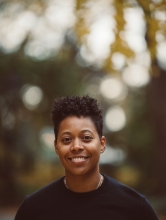This is part 2 of a 3 part series about school building reopenings, education, equity, and disability. Part 1 of this series introduces words, ideas, and the here & now (thinking about 2021).
"Pleasure is political, it isn't neutral. People try to take away or control the pleasure of those who are already oppressed. So pleasure is important to our fighting for freedom. Pleasure is freedom." Sami Schalk (she/her)
Since March 2019, there have been many examples of disabled Black people saying their opinions, living well, struggling, fighting back, and sharing their joy. For example, Keri Gray (she/her) and Justice Shorter (she/her) had previously helped write" Disability Solidarity (fighting together for each other): Finishing the 'Vision for Black Lives.'" That opinion was accurate and not all positive since they pointed out that Black Lives Matter had left out disability justice (the value of fighting for all disabled people). In 2020, Gray and Shorter organized a Black Disabled Lives Matter protest with their group, NAMD advocates.
The Black Disabled Lives Matter protest and the pictures that came from it could have been used in schools for all kinds of learners. It could have helped students learn about how some issues affect each other. For example, like how racism (discrimination against people based on race) and ableism (discrimination against people based on ability) work together. Students could have learned more about people who are like them, and also learned how to plan with others to create change.
Schools today tend to value following directions, tests that are the same for everyone, and sameness. It would be better if they explored and celebrated different people and ways of being. Students could have also learned about how different identities (like being Black, disabled, queer, an immigrant, etc) affect each other. They could have seen how fighting and joy go together. Timotheus "TJ" Gordon (he/him) seems to agree. He wrote "Black joy is becoming more accessible to everyone! A great example is how Black disabled people are coping with the COVID-19 pandemic...we can be ourselves and proud as black AND disabled at the same time!"
We learned from disabled Black artists, activists, scholars, and more to come up with practice strategies for your schools. We encourage you to apply them if they are relevant. We also want to invite you to continue to learn from disabled BIPOC (Black Indigenous People of Color). If you're not sure where to start, the links within this series may be a good starting place.
Intersectional Representation (How people are represented in ways that show all of their identities)
"What people think of when they think of the disability community is white people. They often don't think of people of color or LGBTQ+ (Lesbian, Gay, Bisexual, Trans, Queer, and more) people when they think of disabled people. Instead, they think of cis white male wheelchair users who hate themselves because that is so often the way pop culture shows disabled people. I’m not a cis heterosexual white male wheelchair user, so in pop culture, I don’t exist. That’s not okay because it’s not reality. I exist, I am a real person behind these words, and I deserve to be seen." -Keah Brown (she/her)
| Instead of... | Try... |
| Teaching only what you're given in the curriculum. These are often offensive, erase people's identities and experiences, and don't represent students. | With your coworkers and students (this is too big to do alone!), find examples from the past and present of disabled Black people fighting back, creating, and making change. Add these to what you're teaching.
This can look like:
|
Resistance & Solidarity (Fighting Back and For Each Other)
"The needs of teachers and schools are usually valued. DisCrit (a way of thinking about disability and race) solidarity rejects things like trying to control individual or whole class behaviors. These conversations assume that students need fixing. Fighting back in all its forms must be viewed as strengths. We also need to see how fighting back is connected to all the ways that students are oppressed. It is their way of channeling that oppression into action." - Dr. Subini Annamma, she/her
| Instead of... | Try... | Valuing classroom management techniques over student engagement and teaching. This includes things like: reward systems, so-called "disciplinary" practices, and more. | Students are more able to learn when they feel accepted. Educators may also find it more meaningful to fight with their students, instead of against them.
This can look like:
|
Creative learning
"Often people who 'think differently' (like autistic people, dyslexic people, and so on) are not included in stories about artists, art, and creative spaces. So we gladly create our own. This lets us take ownership of our stories and tell them how we choose to tell them. Raw and honest. My role as a mom is to help my Autistic son accept his playfulness, as I continue to accept mine." -Jen White Johnson, she/her
| Instead of... | Try... |
| Teaching in ways that we often have. This includes things like separating reading, writing, math from the arts and other more creative learning (like science and group learning). | Make sure your students have different ways to learn and show their learning.
This can look like:
|


